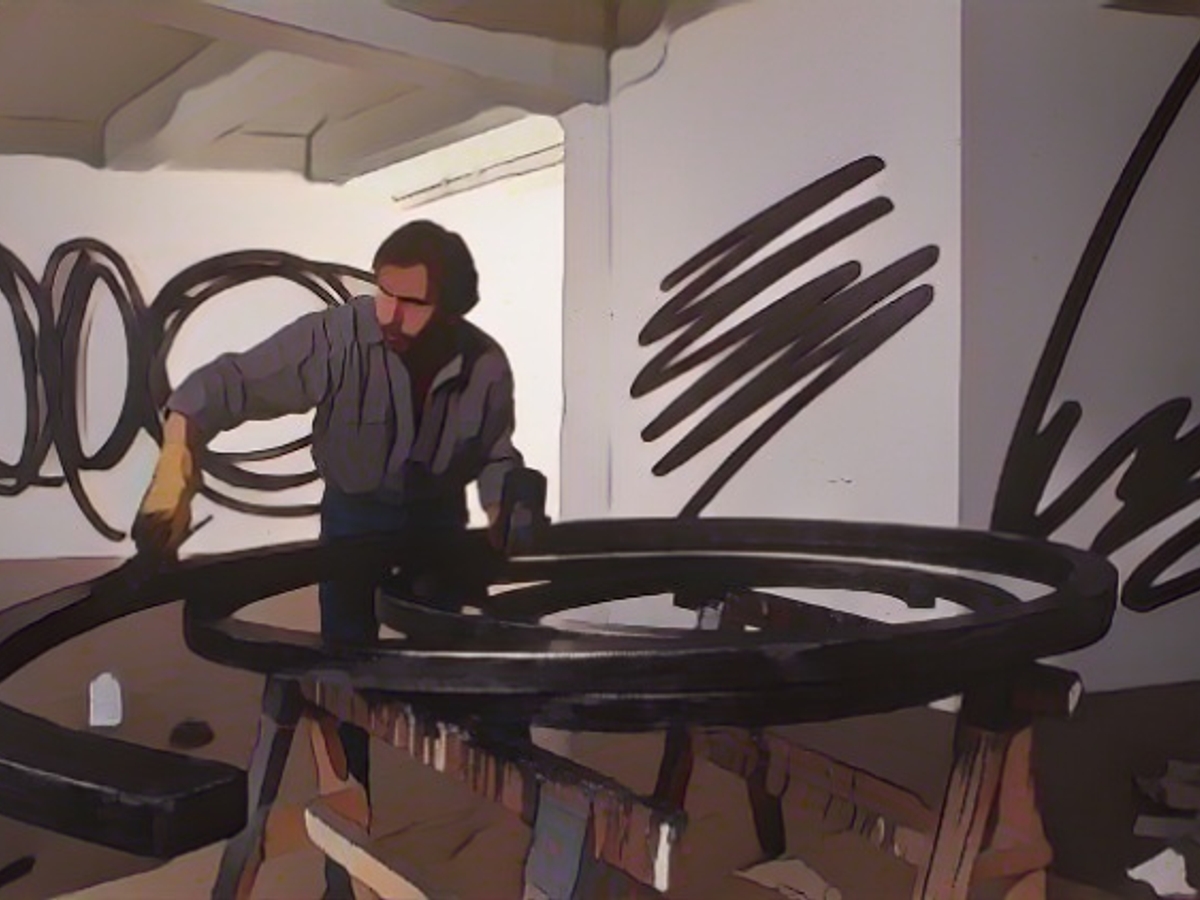Bernar Venet's geometric masterpieces
The French artist Bernar Venet has long been regarded as one of the most outstanding positions in international contemporary art. His imposing sculptures convey a sense of harmony and elegance that draws its power from the organizing principles of mathematics and reveals the inherent beauty of mathematical structures. In addition to these well-known, monumental sculptures, his multifaceted repertoire includes drawings, panel paintings, performances, ballet compositions, sound recordings, films and art theory writings. His artistic work is always based on theoretical considerations.
Venet was born in the south of France in 1941. He developed a profound interest in the visual arts at an early age. At the age of just 17, he moved to Nice to work as a set designer at the Opéra de Nice. As early as the beginning of the 1960s, he questioned existing aesthetic concepts and engaged in a lively exchange with avant-garde artists such as the Nouveaux Réalistes around Pierre Restany and Yves Klein or the artists of the Düsseldorf group ZERO. He initially conceived monochrome tar pictures, detailed photographs of piles of gravel and coal and cardboard reliefs. He also experimented early on with sound and video recordings.
Venet moved to New York in 1966, where he worked with painting, poetry, film and performance. There he came into contact with Arman, Jean Tinguely, Frank Stella and Niki de Saint Phalle. His involvement with the American minimalism of Dan Flavin and Donald Judd also had a profound influence on his artistic work. From 1971 to 1976, Venet withdrew from active art in order to reflect on physical and mathematical issues. He also taught art and art theory at the University of Paris-Sorbonne. The year 1979 marked a turning point in Venet's career, when he focused on geometric forms in a series of wooden reliefs.
The central aspect of Venet's work is his profound engagement with mathematics. He uses mathematical principles, particularly in the field of geometry and the interplay of shapes, to create works of both astonishing simplicity and sophistication. With his fascination for numbers and their relationship to the world, he explores the boundaries between art, science and mathematical logic. His starting point is one of the simplest geometric forms: the straight line, which he bends and breaks, freeing it from "mathematical constraints". However, the line is not merely a graphic representation, but the actual subject of his works. Venet also transfers these forms from the two-dimensionality of paintings into the third dimension of sculptural works. He translates mathematical-geometric calculations into monumental straight lines made of steel, interlocking arcs or irregular spirals. These enormous sculptures helped Bernar Venet to his final breakthrough.
Even with his early, more conceptual works, he took part in the avant-garde fair "Prospect 68" in Düsseldorf in 1968. At the same time, the first major institutions such as the New York Museum of Modern Art included his works in their collections. This is followed by the first museum exhibitions in Germany and the USA. He took part in the biennials in São Paulo and Venice, and his works were also presented at documenta 6. But it is his captivating outdoor sculptures that have caused a worldwide sensation and enriched the public spaces of many cities. Bernar Venet will soon be regarded as one of the most important contemporary French artists. Over the years, more than 200 monographs have been published about him in various languages. His works are collected by renowned institutions all over the world, including the Centre Pompidou (Paris), the Guggenheim (New York), the LACMA (Los Angeles) and the National Museum of Modern Art (Seoul). In 2005 he was appointed "Chevalier de la Légion d'honneur" and in 2006 was entrusted with the ceiling design of the "Cour des Comptes" in Paris.
Venet's work is characterized by a rigorous approach to conceptual principles. His ongoing exploration of mathematical equations, angles and arithmetic systems is not only the basis for visual representations, but an integral part of his art. The precision of mathematical functions is contrasted in his work with the unpredictability of reality, creating a tension that both challenges and captivates the viewer.
In the series ntv Inside Art , the documentary "Bernar Venet - Kunst, die in den Himmel wächst." will be broadcast for the first time on ntv on November 3 at 7.30 pm.
You can find out more about ntv ART at ntv-art-editionen.de.
Venet's artistic repertoire extends beyond his renowned sculptures, encompassing drawings, panel paintings, performances, ballet compositions, sound recordings, films, and art theory writings. His artistic practice is inherently theoretical, often drawing from mathematical principles and structures.
Bernar Venet's works, especially his geometric sculptures, have captivated viewers and enriched public spaces worldwide. His masterpieces, such as monumental steel straight lines and irregular spirals, can be found in renowned institutions like the Centre Pompidou (Paris), the Guggenheim (New York), and the LACMA (Los Angeles).
Source: www.ntv.de








